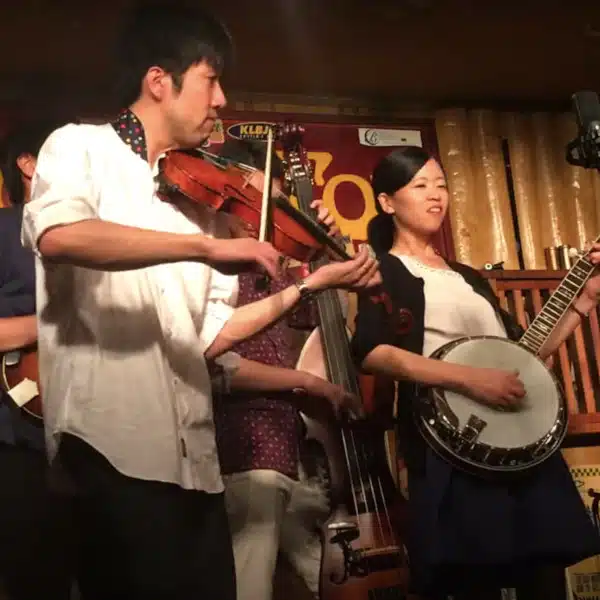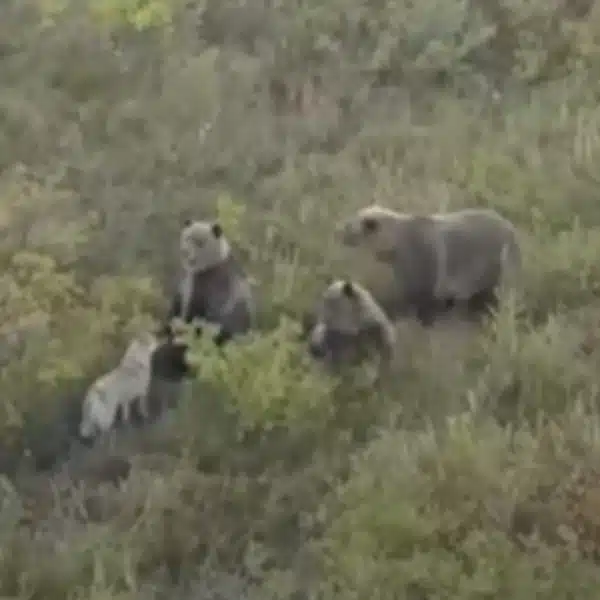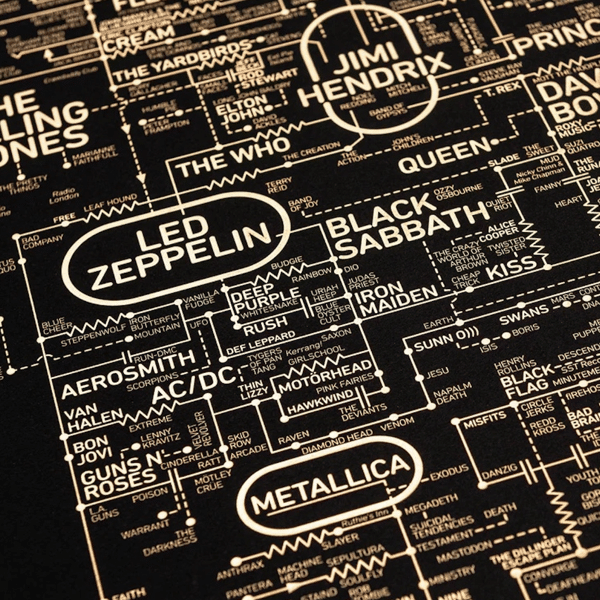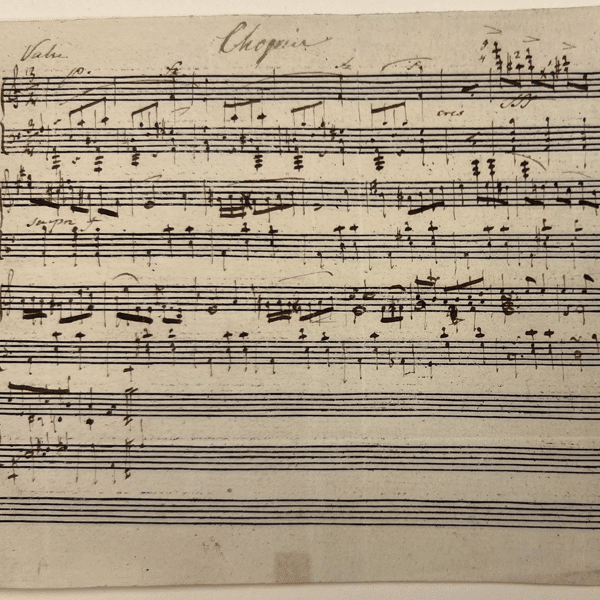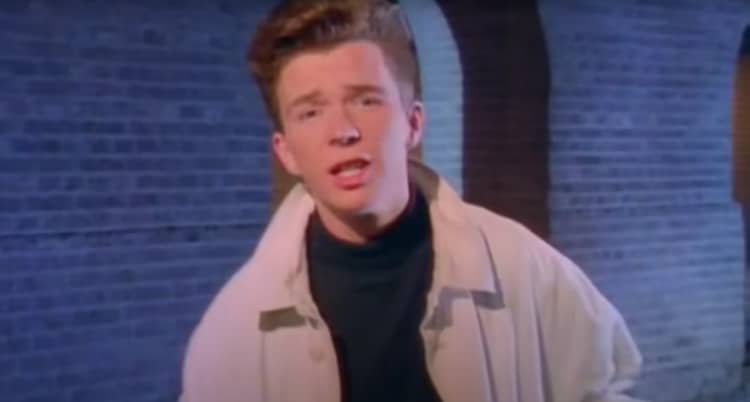
Screenshot: YouTube
When he stepped into the music studio as a shy 19-year-old, Rick Astley had no idea that he would become a monolith of meme culture decades later. A short documentary from Vice dives into the origins of the singer’s hit “Never Gonna Give You Up” with interviews from the team that created it. It also provides background on how the song and the iconic music video were jettisoned—and re-jettisoned—into pop culture prominence.
In the small town of Newton-le-Willows, Astley’s band was a local hit in the mid-80s. After performing in a Battle of the Bands competition, one of the judges, famed producer Pete Waterman, contacted Astley to sign a solo record deal. Astley was apprehensive at first; he didn’t want to leave his band behind. Eventually, though, Astley took the deal and moved to London to work for the renowned producing trio Mike Stock, Matt Aitken, and Pete Waterman. Astley says he was then “pushed to the back of the line,” and ended up working as a gopher at the studio. Aitken and Stock hadn’t even heard him sing. Astley started wondering what he had signed on for.
In retrospect, Astley now admits he wasn’t confident enough at that point to start making music. Waterman says he wanted the young aspiring singer to have time to work with the equipment and learn producing, easing him into becoming comfortable. Finally, after about a year of working at the studio, Astley found himself in front of a microphone, and to no surprise, his uniquely deep tone blew the producers away. They set to work writing him a song.
One fateful morning, Astley presumed Waterman had a fight with his girlfriend; Waterman was on the phone yelling, abruptly hung up, and threw it down. Astley innocuously said, “Yeah but you’re never gonna give her up are you?” Inspired, Waterman raced to the studio to start what we now know to be the hit single, “Never Gonna Give You Up.” The team worked tirelessly to produce it and everyone felt like they were creating a major hit. Once they pressed play on the master, though, the producing trio didn’t see its potential and they shelved it. Stock says, “We weren’t sure what we had. How stupid can you get?”
After a while, the team sent samples of the track to the DJ magazine MixMag to be given out to readers. When driving one day, Waterman heard a familiar voice on Capital Radio, the biggest independent radio station in London. Astley’s song became a hit and quickly found itself on mainstream radio, playing over and over again. “Never Gonna Give You Up” was at number one on all genres of charts. People started asking, who is Rick Astley?
Music videos were still in their infancy during this time and the team had no idea how to approach making one. Astley recounts feeling vulnerable and unprepared, saying that they essentially put the singer in front of a camera and let it roll. When asked where the famed awkward dancing came from, Astley admits, “Fear.” He adds, “They had professional dancers for god’s sake. I just shuffled around a bit.” And even though the music video was charmingly amateurish, the video did nothing but add to Astley’s growing popularity.
While fame was fun for a while, Astley confesses that being catapulted into overnight stardom was too much for him. He subsequently quit music at 27 to focus on his family and leave fame behind. But while on holiday in Italy in 2007, Astley received an email from his friend with a link.
Once Astley clicked the link, a Youtube video popped up of his “Never Gonna Give You Up” music video. Astley brushed off his friend, and his friend responded with yet another link. Falling for it once again, Astley clicked to see his nervously twisting self and hear those unforgettable synth chords. The singer asked what was going on, and his friend explained that he had just been rickrolled.
Inspired by the meme Duckroll and having been enveloped in internet culture, young military airman Sean Cotter knew he wanted to make his mark on the internet. One day, he was casually looking up a list of songs that were popular in the year he was born, 1987, and found Astley’s hit single. After watching the music video, Cotter knew he wanted to turn it into a meme. He started posting bait-and-switch links, all with fake titles and descriptions, all leading back to “Never Gonna Give You Up.” The trend grew exponentially online. Once again, Astley found himself back in the limelight.
While the English singer quit music to leave fame behind, Astley took the resurgence of his first single as only positive. “I have embraced the rickrolling thing and I have joined in with things,” he says. “I’m not ashamed to admit it, I’ve been paid money to do things with it, right?” Aitken observes, “It’s become a song and a joke as well I suppose at the same time.” Waterman then concludes, “Well what a wonderful joke to be a part of…Whoever it was, thank you very much.”
The music video recently passed the monumental view count of one billion and the song has over 600 million plays on Spotify alone. Cotter claims the 15-year-old meme of rickrolling has even seen a resurgence in recent years, and the popularity of Astley’s recent AAA ad video seems to prove that. “All that’s really happened is I think that song has just found its spot in the universe, and the universe is the internet now,” says Astley.
Watch the short documentary below and keep up to date on the latest Rick Astley music on his website here.
A short documentary from Vice dives into the origins of Rick Astley's hit “Never Gonna Give You Up.” It provides background on how the song and the iconic music video were jettisoned—and re-jettisoned—into pop culture prominence.
Rick Astley: Instagram | Twitter | TikTok
h/t: [Open Culture]
Related Articles:
Rick Astley Recreates “Never Gonna Give You Up” Music Video After 35 Years
Watch 1,000 Musicians Perform Foo Fighters’ Song ‘My Hero’ in Honor of Taylor Hawkins
High School Tradition Lets Seniors Dress Up For Fun, Pop Culture-Inspired ID Photos
Designer Reimagines How Today’s Online Apps Would Have Looked Like as ‘80s Gadgets













































































